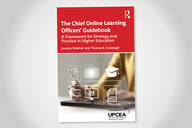You have /5 articles left.
Sign up for a free account or log in.
The Jan. 14 letter from Senators Warren, Brown and Smith to the CEOs of eight online program managers has been making the rounds across university networks. This letter, a follow-up to a January 2020 request, asks that a range of data be made available concerning the financials, demographics and outcomes related to university/for-profit online program partnerships.
The letter foregrounds the request for data by noting the growth of both online education as a consequence of the pandemic and the expansion of OPM/university partnerships.
“The COVID-19 pandemic has significantly increased the need for online education, and one industry observer projects that there will be 367 total OPM-university partnerships by the end of 2021. As students become more comfortable with or demand the flexibilities provided by virtual learning formats and universities increase their online offerings, this expansion is likely to continue.”
The heart of the senators’ concerns about the growth of the OPM footprint center around levels of student debt. The senators write,
“We continue to have concerns about the impact of OPM partnerships on rising student debt loads. The responses to our previous letters confirmed that OPMs often have tuition-sharing arrangements with universities, which commit an ongoing percentage of tuition revenue to the OPM to finance the start-up and ongoing costs of operating online degree programs. OPM often receive 50% or more of students’ tuition. These agreements may create a disincentive to lower costs.”
We think many of the questions raised in the letter are the right ones. OPMs need to be held accountable to challenges to the cost model, their role in the student debt crisis and the often lopsided revenue-share models that disadvantage many schools in the greatest need.
Readers of our books, particularly Learning Innovation and the Future of Higher Education, will not be surprised that we view many aspects that go into a strong online program as core competencies of a resilient university. We have long been concerned that the true cost of OPM partnerships is the crowding out of opportunities for universities to develop capabilities in all aspects of online course and program design, development and delivery.
While it may very well be true that the pandemic has increased demand for “traditional” online learning, it seems to be the case that the pushback against online learning is really a pushback against the type of online learning that happened in the first year of the pandemic.
As many have noted, including us, the ad hoc remote learning that many instructors have had to engage in is quite different from what we tend to think about when we discuss online learning. The larger national conversation (and likely many local conversations within institutions) continues to conflate the two and loses sight of the differences.
This is particularly true when the conversation turns to the effectiveness of online learning. For many, the assumption is that it is not nearly as effective as in-person instruction. There is plenty of research to show not to be the case. Well-designed, well-taught online courses can be as effective or more so than in-person instruction. Even more effective are hybrid courses that take advantage of the affordances of both in-person and online modes where and when they are most beneficial.
However, this does not mean that remote instruction—particularly remote instruction during a pandemic in which all aspects of our faculty members’ and students’ lives have been disrupted—is as effective as online instruction.
To make online instruction effective, courses have to be designed to be taught online, faculty need to be taught how to teach online and students need to be taught how to learn online.
This brings us back to be the challenge with OPM partnerships.
Unless significant time and attention are devoted to designing courses to be taught online and helping faculty and students perform their best online, remote courses will almost always likely be shades of their in-person courses.
The revenue shared with OPMs is one piece of the puzzle. Without that revenue, it may be more difficult for schools to invest internally in the resources needed to make the majority of their courses and degree programs effective.
More than the revenue, though, schools lose (or fail to build) the intellectual capability and capacity to understand how to help their students and faculty learn and teach in the online environment. OPM relationships offload work and services, but in doing so they run the risk of keeping schools from building these capacities internally.
These capabilities are necessary, not just for their online courses but for all instruction that blends in-person instruction, online instruction and hybrid formats.
Schools can easily find themselves in a vicious circle of outsourcing that does little to build the capabilities needed to provide the most robust learning environment for their students. What we would love to see in a response to Warren, Brown and Smith is an explanation of how OPMs are helping schools to build the digital learning capacities that are essential for ensuring institutional resiliency.




